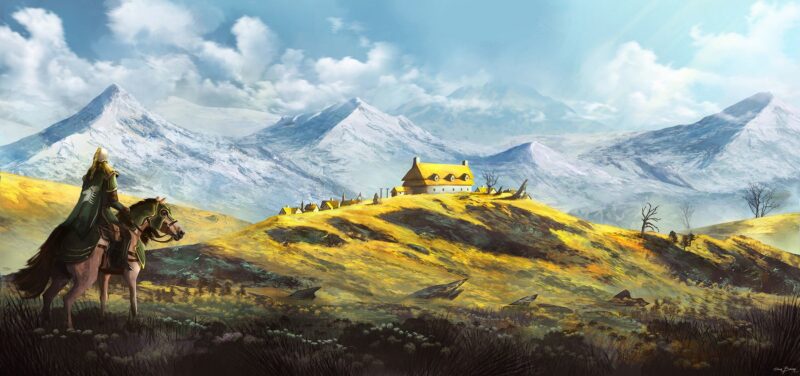DURIN’S BANE AND DISCOVERY OF THE DRAGONS
While the Hobbits thrived in this new world, the dwarves of Durin’s folk faced their most significant loss to date. Waking during the years of the trees in Mount Gundabad between the gray and misty mountains, the deathless eldest of the seven fathers of the Dwarven race journeyed south and founded the realm of Khazad Dum, where his people and descendants thrived for thousands of years.
The dwarves were initially created by Vala Aule the Smith and so possessed an innate love of precious jewels, working as miners to extract wealth from their mountain home. Discovering Mithril, a substance more robust than steel but lighter and more beautiful, they continued to delve deeper into the Misty Mountains throughout the first and second ages until the year 1980 of the third age when they woke up Balrog of Morgoth, A Maiar fire spirits born before the world’s creation.
When Morgoth was defeated and expelled from the world, the Balrog who survived went to sleep deep underground, where no more was heard from them until the awakening of Durin’s Bane in the Misty Mountains, who wrought terror upon the Longbeard Clan of Khazad Dum. Waging war on the Beast, said dwarves lost many, including their King, Durin the Sixth, and his successor, King Nain the First, forcing them to abandon their ancestral homeland and seek refuge in the gray mountains of the North. Renamed Moria, meaning the black pit, Khazad Dum was left entirely to the Balrog, where he remained for centuries as a nameless terror, inspiring fear in neighboring lands.
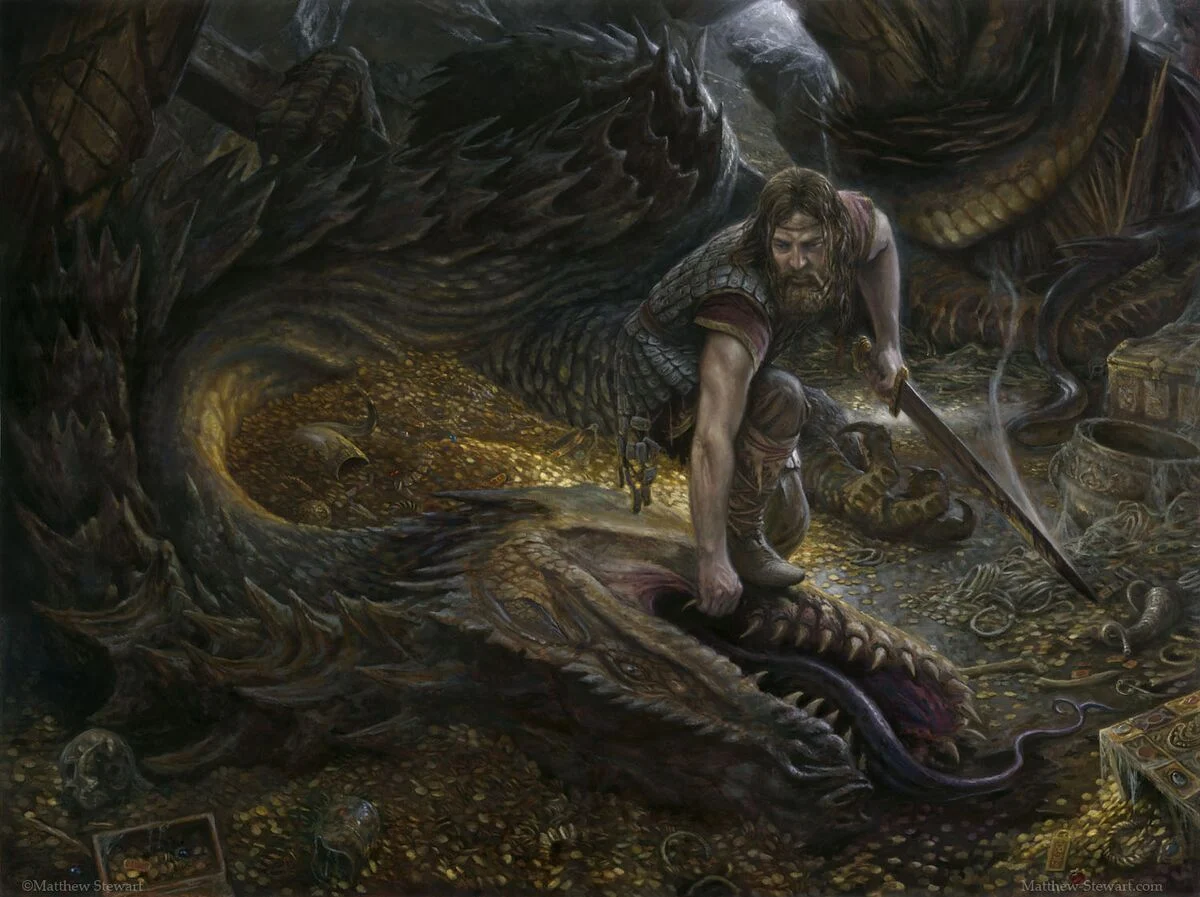
Unfortunately, while both the Eotheod and Longbeards migrated to the gray mountains, seeking peace, they were plagued by further conflict and death. No strangers to these lands, Durin’s folk settled the gray mountains thousands of years earlier and held colonies in Erebor and the Iron Hills. But, as was so often the case, the extraordinary wealth they mined from the mountains brought about their downfall when it attracted the attention of Scatha the worm, a dragon which resided in the northern wastes.
Attacking the dwarves, Scatha took their home and treasure, forcing them into flight. Many years later, still residing in the mountains in the third age, Scatha remained an ever-present threat to the Eotheod and Longbeards in the area. Rising to the challenge, the hero Fram, son of the Lord of the Eotheod, made his way into the lair of the Beast, slaying the mighty dragon before removing its teeth as a war prize.
Fram’s claim of the dragon’s treasure for the Eotheod sparked both admiration and animosity. Celebrated as a hero by his own people, he found himself a target of wrath from the dwarves, who demanded the return of the wealth stolen by Scatha. Rejecting their demands, Fram sent them the dragon’s teeth, accompanied by a defiant note that read:
“Jewels such as these you will not match in your treasury, for they are hard to come by.”
The dwarves, perceiving this as an insult, responded violently, killing Fram and sparking tensions between the Eotheod and the dwarves over the contested treasure.
FIRST WHITE COUNCIL
In the year 1999, King Thrain of Durin’s folk led his people to Erebor, establishing it as their new homeland. Resuming their mining operations, they grew prosperous, prompting the establishment of the nearby town of Dale by Northmen eager to engage in trade with the dwarves. Among the treasures uncovered was the Arkenstone, a unique gem that became a symbol and heirloom for the royal family. Some speculated that this precious jewel was one of the three Silmarils crafted by Feanor.
Amidst the war and darkness that spread across Middle Earth, Gandalf the Gray and an Istari wizard from Valinor were sent to aid in the defeat of Sauron. Suspecting that the Necromancer of Dol Guldur might be the second Dark Lord, they went to investigate in 2063, only to find it empty as Sauron had fled east to avoid detection. This event marked a respite from Sauron’s schemes, leading to a deceptive era known as the Watchful Peace. Lasting roughly four centuries, this period saw a temporary halt in many hostilities fueled by the dark Lord. However, this peace was but a facade, as Sauron used the time to rally the men of the East and strengthen his forces.
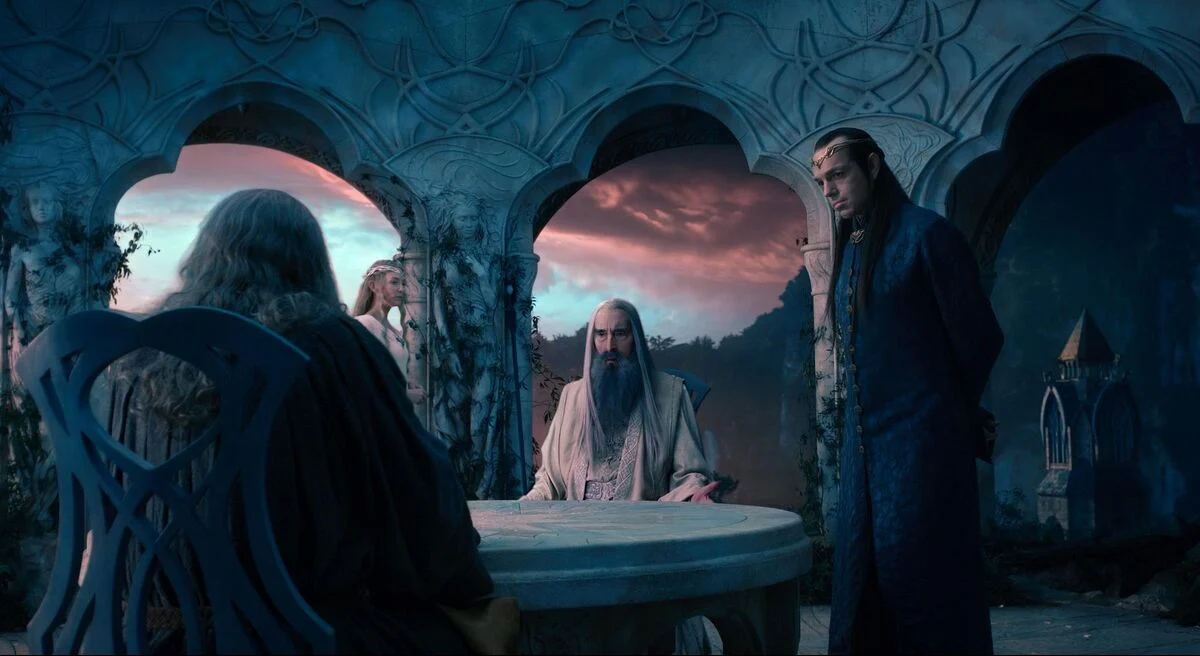
While the Nazgul continued their shadowy work in the West, breeding orcs, trolls, and other monsters, the Witch-king ruled in Minas Morgul, and Khamul the Easterling took charge over Dol Guldur. Having completed his endeavors in the East, Sauron secretly returned to Dol Guldur in 2460. A few years later, in 2463, Lady Galadriel convened the White Council, comprised of the available Istari and prominent elven lords, with Gandalf the Gray chosen as their leader.
Gandalf, ever the humble and independent spirit, gracefully declined the offer, allowing Saruman the White to assume the honor. Saruman, a wise and powerful wizard, harbored a lingering pride and resentment toward Gandalf for being the council’s initial choice.
THE ONE RING COMES BACK
Fate, in its intricate design, unfolded in the same year when the One Ring, the ultimate prize coveted by Sauron and missing for nearly two and a half thousand years, was finally found by the stoor Hobbit Deagol as he fished the Anduin River. Celebrating a birthday alongside his friend Smeagol, a heated argument ensued as each hobbit sought to claim the Ring, succumbing to its immediate corrupting influence. The frenzied fight concluded with Smeagol killing Deagol before fleeing into the mountains with the precious Ring.
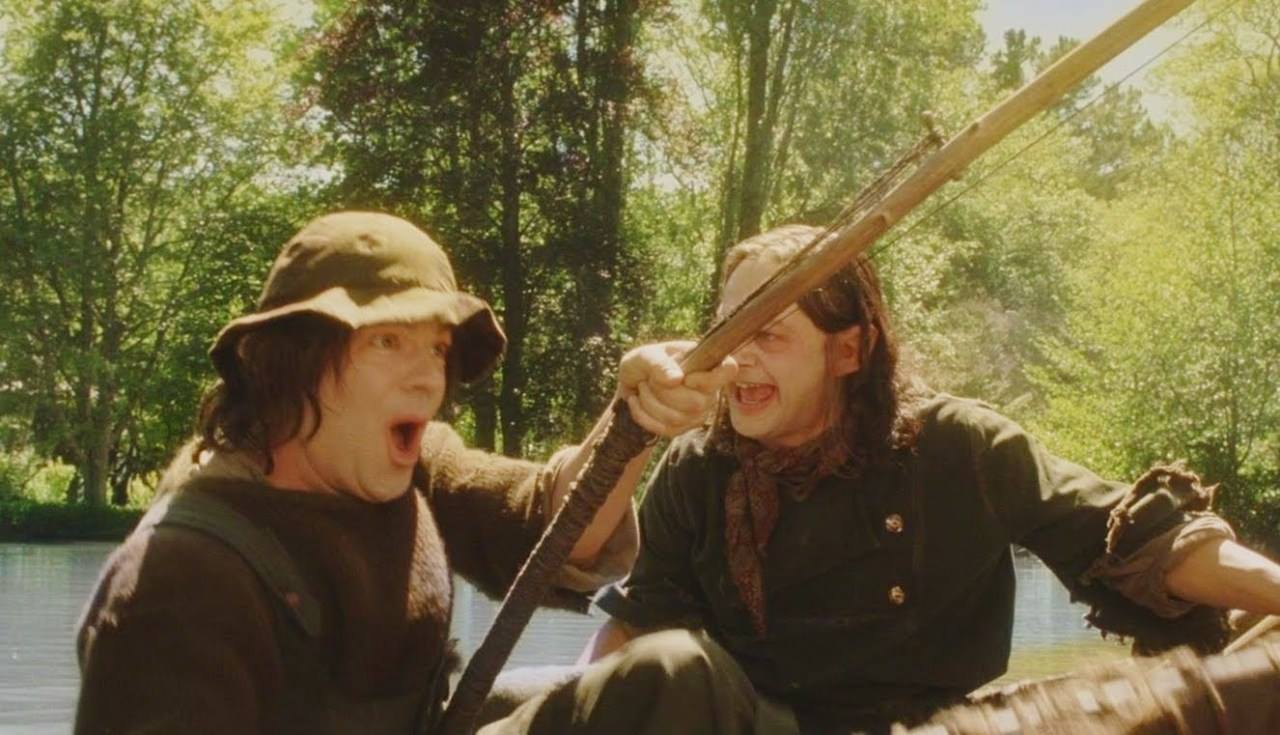
Unbeknownst to the outside world, Smeagol lived alone for centuries, his life unnaturally prolonged by the Ring’s power. The corruption twisted both his mind and body, transforming him into a split-personality monster named Gollum, desperate to go to any lengths to keep his precious prize.
ESTABLISHING OF ROHAN
In 2501 TA, the Eotheod, led by Leod, a skilled horse trainer, were navigating their course. Leod met his end after being thrown from the back of a particularly willful and powerful white horse, said to be descended from the Undying Lands of the West, brought by the Vala Orome, who traversed Middle Earth. Succeeded by his son Eorl, the 16-year-old Lord tracked down the horse, demanding it surrender its freedom as payment for his father’s death. The extraordinary horse, rumored to understand human speech, agreed and became Eorl’s unwavering companion.
Named Felarof, meaning “very strong,” he became the father of the Mearas, the greatest horses of the Northmen, reserved exclusively for their rulers. Among Felarof’s descendants was Shadowfax, a gray mare chosen by the wizard Gandalf, the only known Mearas given to someone outside the royal line.
In 2509, Celebrian, wife of Elrond, ventured to Lothlorien to visit her parents, Galadriel and Celeborn. There, she was attacked by orcs, taken captive, poisoned, and subjected to cruel torture. Learning of the tragedy, her sons Elladan and Elrohir charged to her rescue, slaying the enemy and returning her to Rivendell for physical healing. However, the emotional and psychological damage proved insurmountable, prompting her to bid farewell to her family and set sail for the Undying Lands of the West.
In 2510, Gondor faced yet another invasion from the Easterlings, this time by the Balcoth faction, possible descendants of the Wainriders. Serving Sauron’s interests from Dol Guldur, the Balcoth were supported by Misty Mountains orcs, resulting in the invasion of Calenardhon from two sides. With a low population in this region, Gondor weakened and had minimal garrisons, allowing the Balcoth and orcs to swiftly defeat and surround the Northern Army. In a glimmer of hope, the Eotheod responded to the red arrow, a symbol carried by a Gondorian messenger seeking military aid. The Eotheod played a crucial role in defeating the enemy forces in the Battle of the Field of Celebrant, joining the northern and southern Gondorian armies to expel orcs and Easterlings from the province.
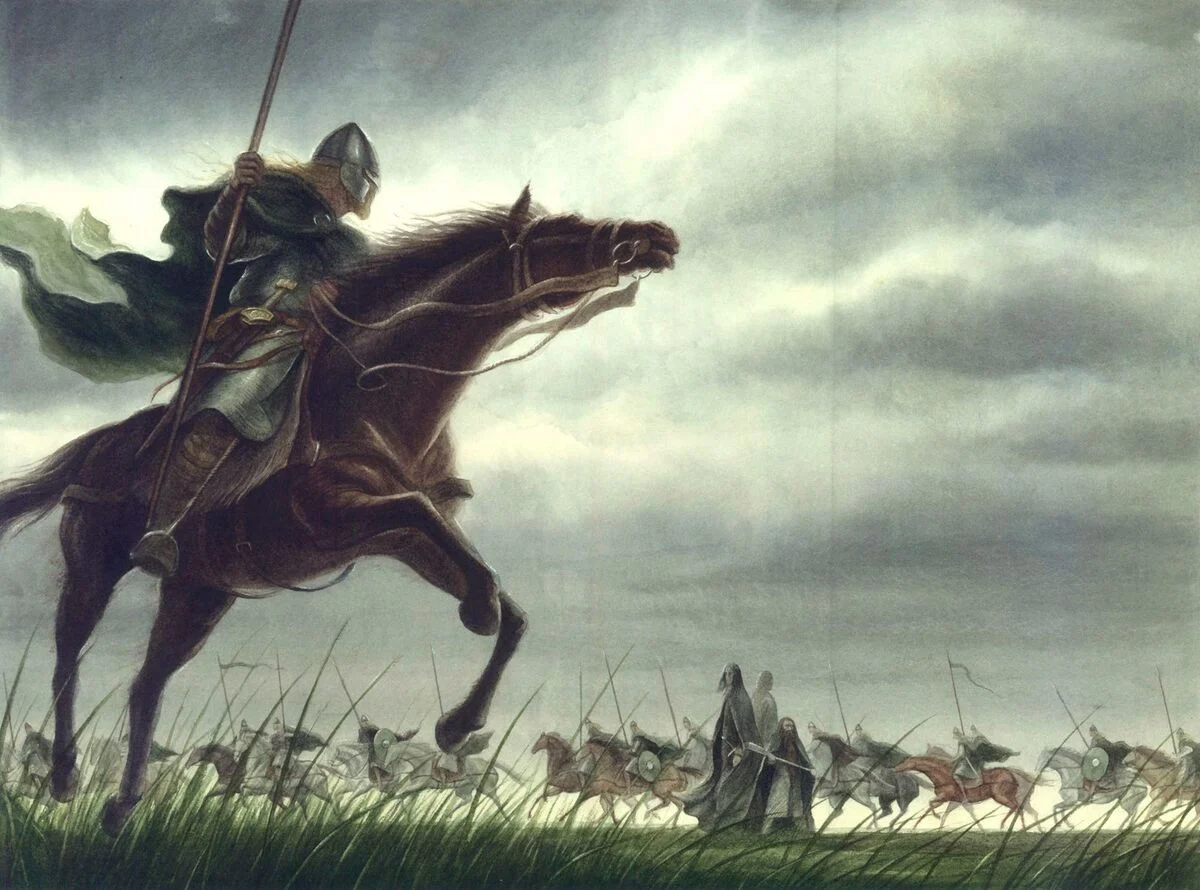
For their service, Cirion, Steward of Gondor, rewarded the Eotheod by gifting them Calenardhon, the lands they fought for, allowing Eorl to move his people south and establish the Kingdom of Rohan. Both leaders swore a sacred oath, binding Gondor and Rohan as eternal allies pledged to come to each other’s aid whenever needed. The official call for aid continued to be a messenger carrying a red arrow, complemented by the beacons of Gondor as an initial warning.
In 2545, the Easterlings renewed their invasion of Rohan, leading to the death of King Eorl and his horse Felerof in the Battle of the Wold. King Brego, succeeding his father, continued the war, eventually driving the Easterlings from his lands. While defending against Dunlending and orc advances in the North and West, Brego brought some measure of peace to Rohan. He commemorated this period by building the famed royal Hall Meduseld in the capital of Edoras, but joy turned to tragedy when the King’s son Baldor announced his intention to prove his valor by venturing into the Paths of the Dead.
Thousands of years earlier, when Gondor first established its rule, the King of the Mountain Realm pledged loyalty but later refused to fight during the final battle with Sauron. Fleeing into the mountains, the King and his men became bound to the region by Isildur’s curse, haunting the Paths of the Dead until their oath was fulfilled. When Baldor marched onto the path, he was lost, never to reemerge. Heartbroken by his child’s death, King Brego died of grief, leaving his second son Aldor as the ruler of Rohan.
SEPERATION OF THE DWARVES
In 2570, the dwarves of Durin’s folk faced another war to defend their homeland as the dragons of the North descended upon the great mountains, slaughtering their people and plundering their treasures. The dragon race, originally created by the Dark Lord Morgoth in the first stage, retreated north after his defeat, where they bred new generations. These dragons, driven by their attraction to treasure, occasionally left their lands to prey upon the peoples of the South, mainly targeting the seven Dwarven clans known for their mountain dwellings and mining expertise.
While dragon attacks were a known threat, they became a severe problem when Sauron gave seven magic rings to the Seven Kings of the Dwarves. Although the rings failed to enslave the dwarves to Sauron’s will, they enhanced their natural abilities and desires, intensifying their love for mining and accumulating wealth. The rings’ influence led to a destructive obsession, drawing the attention of dragons who ravaged their homelands, destroying or consuming four of the seven rings of power.
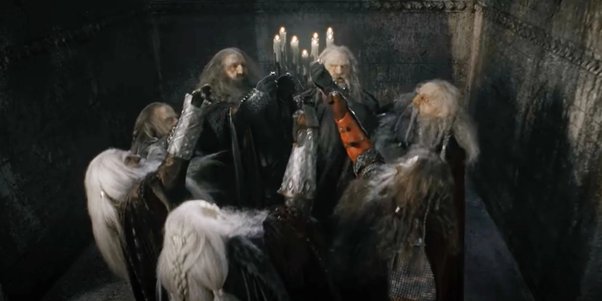
Though Sauron managed to recover two more rings, the last one remained with the King of the Longbeard clan. Suffering hardships, Durin’s folk lost their homeland to the Balrog of Moria, eventually settling in the gray mountains, Erebor, and the Iron Hills. In 2210, King Thorin the First, called for their reunion in the Gray Mountains. However, the concentration of wealth and proximity to the far North made them vulnerable.
In 2570, the war commenced with dragons bringing destruction. Despite fierce resistance and the dwarves’ natural resistance to heat aiding them in battling certain dragons, their King died in the first battle, and his son Fror was killed by a cold drake, leaving Thror to inherit leadership and lead the retreat. Breaking up once more, some dwarves followed the King to settle in Erebor, while others went with his brother Gror to the Iron Hills.
ISENGARD AND CHANGE OF HAND
Isengard, once ruled by Gondor and home to the impenetrable Tower of Orthanc, faced a decline in power and population. After the great plague of 1636, Gondor withdrew resources from the region, closing Orthanc and sending its keys to the capital of Minas Tirith.
Despite facing challenging circumstances, Isengard attempted to retain control by establishing the hereditary title of Lord of Isengard. They entrusted this noble line with the responsibility of maintaining a permanent garrison outside the tower. Initially successful, this arrangement worked well for many years. However, as Gondor’s influence waned, the people of Isengard developed friendships with the Dunlendings of the West, considered enemies of the Dunedain. When Gondor withdrew from Calenardhon, the Dunlendings seized the opportunity to settle the land, intermixing with whoever remained.
Acting without Gondor’s permission, the Dunlendings were later driven back into the West when the land was given to the Northmen, who founded the Kingdom of Rohan. While Rohan experienced a golden age of prosperity, the Dunlendings considered them mortal enemies, strengthening their relations with the people of Isengard, who shared a disdain for the Northmen.
Isengard remained loyal to Gondor for many years, but several events led to its downfall. The Lord of Isengard bloodline ended without heirs, and Gondor’s stewards lost interest in the distant colony. Now ruled by a council of the highest-ranking Dunedain warriors, Isengard’s population, mixed with the Dunlendings, settled outside the walls. In 2710, the Dunlendings seized control of Isengard, killing any remaining loyalists who refused to surrender.
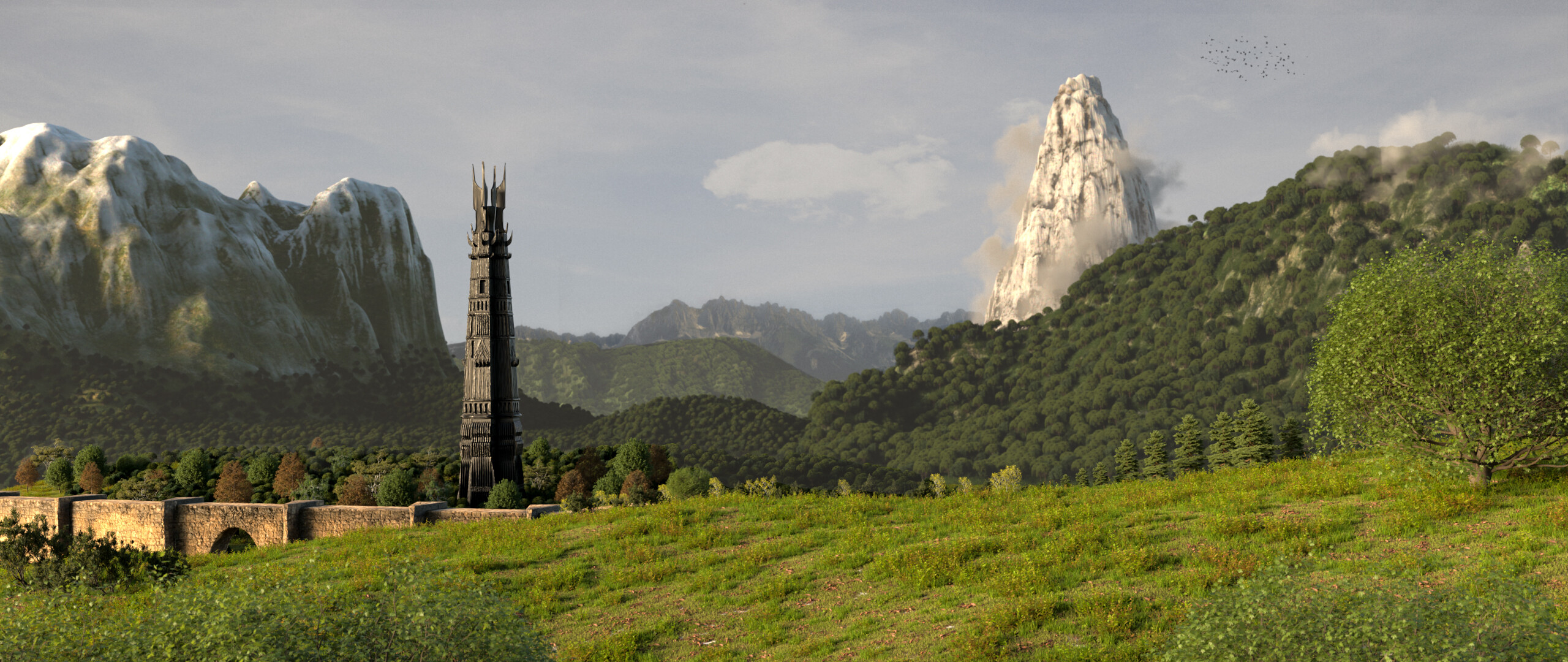
Unable to spare forces, Gondor watched Isengard become a Dunlending realm openly hostile to the horse lords of Rohan, who lacked the strength to confront them directly. Instead, the Rohirrim sent riders to defend their Western holdings. The conflict escalated not only in Rohan but also in Eriador further north, where, in 2740, they faced an orc invasion.
Fortunately, the Rangers, descendants of the Dunedain of Arnor, continued to patrol and defend their ancient homelands, successfully repelling enemy forces. However, a band of orcs led by King Golfimbul of Mount Gram slipped past them and reached the Shire. Sounding the alarm, the legendary Hobbit hero Bandobras Took rallied the Shire’s defenses, leading to the Battle of the Green Fields in 2747. Despite centuries of peace and little combat experience, the Hobbits fought valiantly, with Bandobras decapitating the orc king. By 2748, Eriador was largely free of orc influence.
Returning south, the Kingdom of Rohan grappled with Dunlending raids in the West and faced domestic troubles. Lord Freca, born of mixed Northman and Dunlending blood, governed the rich and prosperous lands of Adorn. Proud and ambitious, he traveled to Edoras in 2754 with a retinue, hoping to pressure King Helm into arranging a marriage between Helm’s daughter and his son Wulf.
Helm, a formidable warrior, was not intimidated by Freca’s proposal and responded with insults and disrespect, enraging Freca. In a fit of rage, Freca spoke harshly, leading King Helm to strike him dead with a fierce blow, earning Helm the nickname “Hammerhand.” Following their leader’s death, Wulf and the men of Adorn were declared enemies of Rohan, seeking refuge with a welcoming Dunlending. Four years later, in 2758, Wulf, Freca’s son, took command of Isengard, ready for revenge.
TRAGEDY OF ROHAN
Forming alliances with other enemies of Gondor and Rohan, such as the corsairs of Umbar and their Haradrim supporters, Wulf led the Dunlendings from Isengard in the North, while corsairs invaded from the South. With Gondor unable to send reinforcements, Wulf achieved significant victories, winning the Battle of the Fords of Isen before capturing Edoras, slaying Prince Haleth, Helm’s eldest son, and seizing the Golden Hall of Meduseld, declaring himself King. Helm Hammerhand, driven into exile, retreated to the fortress of the Hornburg, where he faced a siege.
To worsen matters, the region endured the Long Winter, a five-month period of extreme cold, devastating both sides of the conflict. Facing starvation in the Hornburg, Helm’s last remaining son, Hama, ventured outside the walls in search of food but never returned. Devastated by the loss of his Kingdom and sons, Helm dedicated the remainder of his life to inflicting as much damage as possible. Blowing a great warhorn every night to announce his coming, Helm crept out of the Hornburg, dressed in white, stalking and silently killing as many enemies as possible.
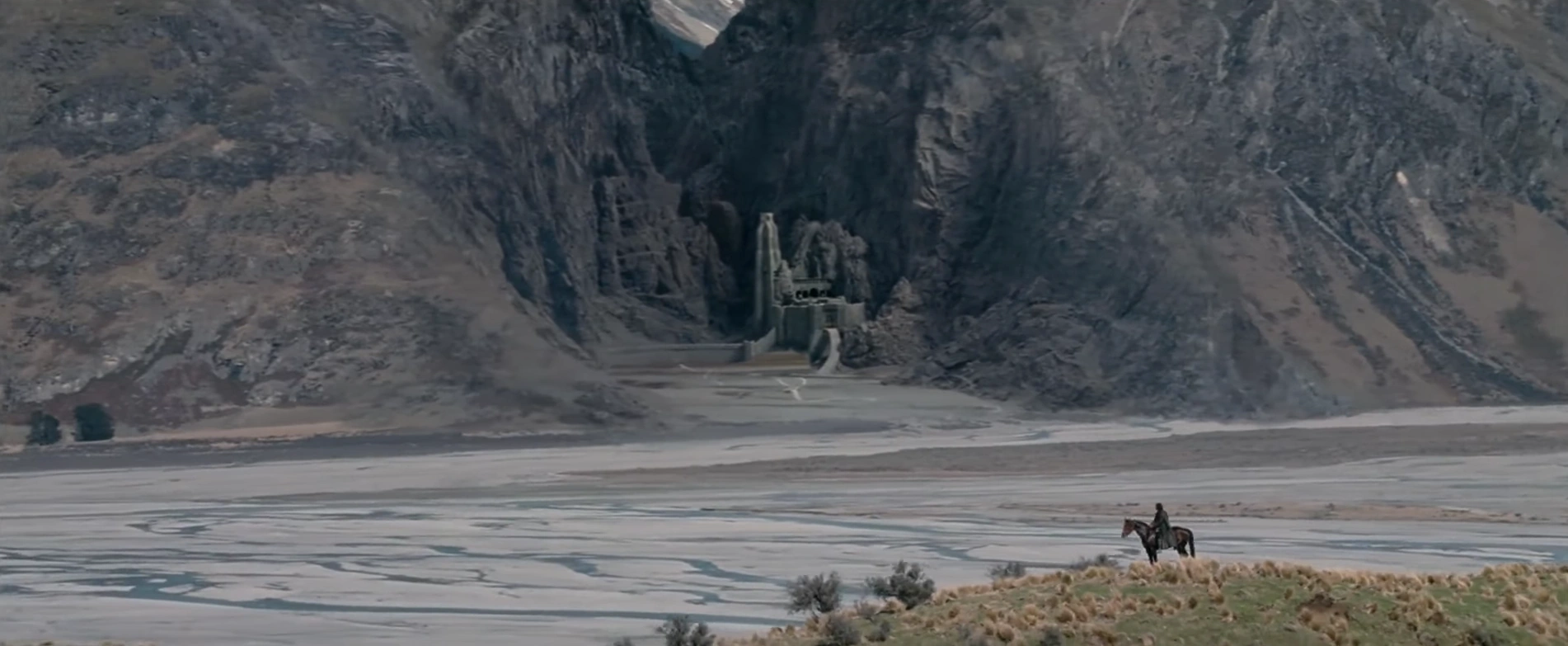
Night after night, Helm terrorized the enemy camp until succumbing to famine and cold, freezing to death in a fighting stance. With the southern invasion defeated and the Long Winter’s end, Gondor finally sent reinforcements north, combining forces with what remained of Rohan’s army hidden in Dunharrow to drive out the Dunlendings. Helm’s nephew, Frealaf, born to his younger sister Hild, a mighty warrior, assumed leadership. He personally led a raid into Edoras, killing King Wulf and liberating the capital.
Clearing the land of enemies, the combined armies of Rohan and Gondor laid siege to Isengard, starving out the last remaining Dunlendings. Eventually, the land was given to the wizard Saruman, along with the keys to the tower Orthanc, with hopes that this powerful ally might help safeguard Rohan in the future.
Sources and Further Information
- Tolkien, J.R.R & Tolkien, Christopher. “The Silmarillion,” Houghton Mifflin Company (2004)
- Tolkien, J.R.R & İpek, Çiğdem Erkal “Translator”. “Yüzüklerin Efendisi,” Metis Yayınları (2007)
- Tolkien, J.R.R & Tolkien, Christopher. “The Children of Húrin,” HarperCollins (2007)
- Tolkien, J.R.R & Tolkien, Christopher. “Beren and Lúthien,” Houghton Mifflin Harcourt (2017)
- Tolkien, J.R.R & Tolkien, Christopher. “The Fall of Gondolin,” Houghton Mifflin Harcourt (2018)
- Orta Dünya – Legendarium Türkiye, YouTube
- Yüzüklerin Efendisi – Orta Dünya, YouTube
- Nerd of the Rings, YouTube
